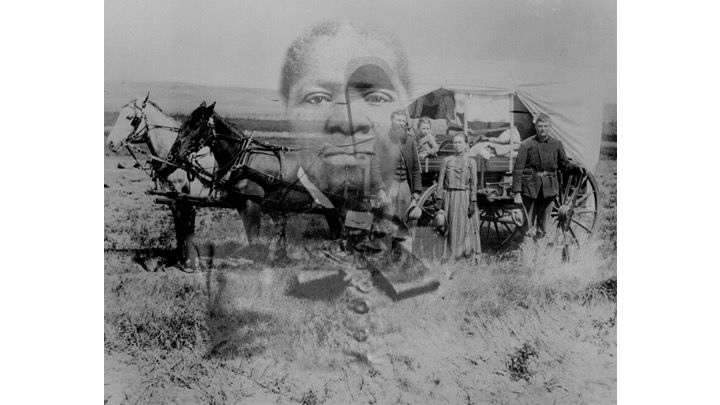Los Angeles has a deep connection to slavery, but those who were subjected to having to grapple with the institution and its legacies in early California have been relatively absent from the archive. California’s early history invokes images of white pioneers who settled in California from the mid 19th century to early 20thcentury. These types of images are plentiful, and their abundance has previously concealed African Americans from the history of early California, as Black pioneers have been documented through very few traces. Biddy Mason, one of Los Angeles’s first Black pioneers, is one exception. Yet, regardless of the small traces of information we have about Mason’s life and impact on the formation of Los Angeles and the foundation she built for the Black community, she is forced to stand as a marker, a representation of those for whom no records exist.
The gaps in the history of African Americans in early Southern California impedes an appreciation for the range and depth of experience within a place, even more so for Black women whom are virtually absent from the archive altogether. Archive toxics are produced through selective inclusion which operates as a form of power, mobilized through historiography that produces an imaginary of particular peoples and places. While the archive is assumed to provide a literal and conceptual place of stable knowledge established from the individuals and institutions that constitute it, toxicity lies in the misinformation, the emptiness, and the selectiveness of knowledge that forms a contaminated ecology of information. Toxic through inclusion and exclusion, producing vacuous spaces and relegating some subjects to the very margins of existence. However, there are always the specters that haunt this place of the archive.
Saidiya Hartman (2019) writes that “Every historian of the multitude, the dispossessed, the subaltern, and the enslaved is forced to grapple with the power and authority of the archive and the limits it sets on what can be known, whose perspective matters, and who is endowed with the gravity and authority of historical actor” (7). Interrogating the archive as a place of toxicity pushes us to read beyond the literal materials that establishes it as a place, and consider the power dynamics as we utilize the archive to produce historical actors and the places they have inhabited. A focus on the minor traces is central to bringing forward the silences of the archive.

An article important to the PECE Design Group in its early years, for thinking about the limits of archives and how to design around them. Lauren Klein is the co-author of Data Feminism.Read more